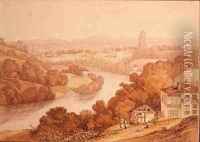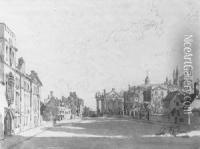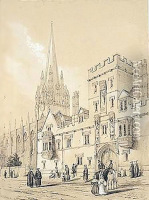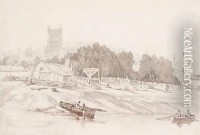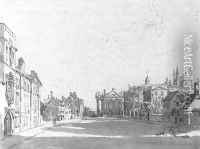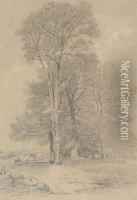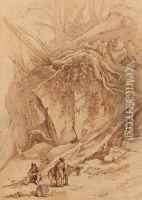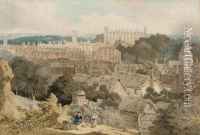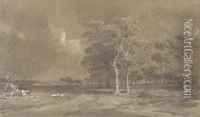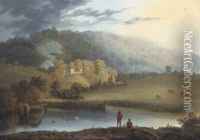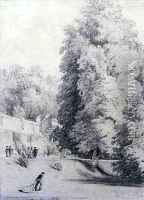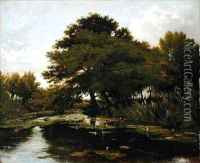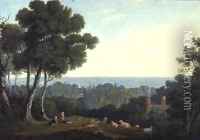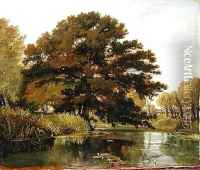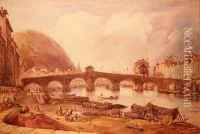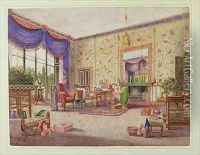William Alfred Delamotte Paintings
William Alfred Delamotte was an English painter and engraver who lived during the late 18th and early 19th centuries. He was born on April 1, 1775, in London, England. Delamotte's artistic interests developed early in his life, and he pursued his passion by studying at the Royal Academy Schools. His education there enabled him to refine his skills in the visual arts, particularly in drawing and engraving.
Delamotte's work is characterized by its detailed landscapes and architectural studies. He was adept at capturing the essence of English countryside and its man-made structures, which made him quite popular among those who appreciated the romantic and picturesque qualities of rural England at the time. His engravings and drawings often depicted historical ruins, castles, and abbeys, reflecting the romantic fascination with the past that was prevalent during his era.
In addition to his landscape work, Delamotte was also known for his role in education. He became a respected instructor in drawing and was appointed as a drawing master at the Royal Military College in Great Marlow and later at Sandhurst. His teaching career had a significant impact on the training of British military officers, many of whom were required to learn drawing as part of their military education for the use in map making and reconnaissance.
Delamotte's influence extended to his family as well. His son, Philip Henry Delamotte, also became a notable artist, known for his work in early photography and for documenting the construction of the Crystal Palace in London. William Alfred Delamotte continued to work and teach throughout his life, contributing to the art world through his landscapes and his role as an educator.
He died on February 28, 1863, leaving behind a legacy that not only included his own artwork but also the artistic and technical skills he had imparted to his students. Today, Delamotte's works can be found in various art collections, and they continue to be appreciated for their historical value and their charm in capturing the British landscape of his time.
